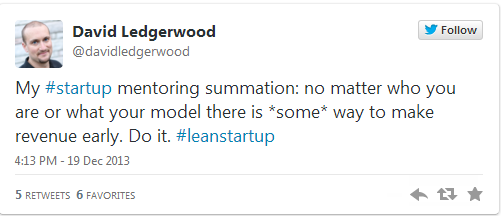Those of you familiar with crowdfunding know it’s quickly evolving into an industry itself. In fact, crowdfunding is predicted to create at least 270,000 jobs and inject $65 billion into the economy by 2014’s end.
As an entrepreneur (current or aspiring), how can crowdfunding help you grow your business? To find out, it’s helpful to understand the trends driving the most successful campaigns and to choose the right platform for your project.
Entrepreneurs can take advantage of these three big crowdfunding movements:
The Rise of the DIY Entrepreneur
In the past, entrepreneurs with business ideas relied on venture capital or raised seed funding from friends and family. Crowdfunding offers an advantage traditional methods don’t by providing validation as well as money. A successful campaign shows that there’s a market for what you offer. Getting additional funding is easier once an idea is proven viable.
For example, Bluff Works, a wrinkle-free men’s pants company, had over a thousand backers on Kickstarter and raised more than $128,000 — far exceeding its $13,500 goal. Its founder used the campaign to conduct market research and learned that customers wanted black pants, something he hadn’t considered when launching the campaign.
Leveraging an Existing Network
Another emerging trend is using your existing network to jump start a campaign. This works for entrepreneurs, writers and artists with devoted followings who are invested in what you have to say.
People enjoy the “story behind the story.” A behind-the-scenes look at what you intend to create increases your likelihood of getting funded. After losing her child, Angela Miller built support for her book by sharing her story on social media. Her campaign garnered 217 supporters (70 percent strangers) and raised $12,978 on Pubslush.
Funding Tech, Apparel and Video Production
Cutting-edge gadgets do especially well on crowdfunding sites. The Pebble Smartwatch raised over $10 million on Kickstarter, for example.
Fashion also gets a lot of coverage in the crowdfunding space. Stantt, a casual shirt company, raised cash on Kickstarter and was able to offer over 50 sizes, thanks to precise body measurements and 3D body scans.
Producing films costs a lot of money, and crowdfunding mitigates some of the financial risk. The “Veronica Mars” movie projectshattered Kickstarter records when it raised more than $5.7 million from 91,585 fans of the canceled show.
If your project fits into one of these categories, it’s made for crowdfunding. Even if it doesn’t, you can see what made these campaigns succeed: A real user need (Pebble), dissatisfaction with current offerings (Stantt), and a cult-like following (“Veronica Mars”).
Choosing the Right Platform for Your Campaign
Before setting up your campaign, evaluate the platforms available and weigh the advantages of each.
- Kickstarter: This company specializes in creative projects (films, games, music, art, design and technology), all of which remain fully owned by their creators. The funding is all or nothing, meaning you must raise the entirety of your goal to receive any money.
- Indiegogo: Geared toward the international community, Indiegogo supports 224 countries and territories, five currencies, and four languages.
- Pubslush: My company, Pubslush, funds literary and publishing projects. Authors can evaluate interest in their ideas and learn readers’ demographics. Readers can pledge money to bring books to fruition.
- Crowdfunder: Crowdfunder connects investors and entrepreneurs in film and entertainment, small business and technology. It serves North and South America and accepts minimum investments of $1,000.
- StartSomeGood: This site specializes in social entrepreneurship and allows you to set a Tipping Point Goal (what a project must raise to make an impact) and an Ultimate Fundraising Goal.
Once you’ve chosen a platform, position your campaign for success.
- Learn from other campaigns. Review the most successful campaigns on different sites to see what worked. What wording did they use? What rewards were offered? How much interaction did the users have with backers?
- Get advice from those who’ve been there. Reach out to individuals who’ve run successful campaigns. Ask what worked well, what they’d do differently, and what insider tips they can offer.
- Develop a pre-campaign strategy. Campaigns that gain 30 percent of their goal within the first week are more likely to succeed. Get between 30 and 50 percent of your supporters in place before launching your campaign.
Crowdfunding opens a world of possibilities, but it’s not an easy out or a guaranteed way to get funding. But if you do your research, choose the appropriate platform, and promote your campaign before its launch, your odds of success are much better.
Amanda L. Barbara is the vice president and co-founder of Pubslush (www.pubslush.com), a global crowdfunding and analytics platform for the literary world. Follow on Twitter
The Young Entrepreneur Council (YEC) is an invite-only organization comprised of the world’s most promising young entrepreneurs. In partnership with Citi, YEC recently launched StartupCollective, a free virtual mentorship program that helps millions of entrepreneurs start and grow businesses.









